I wasn’t the one who took that bite out of that green plate coral. Can you see what looks like a bite mark? It is at about 4 o’clock on the large, green, plate coral, which is also one of the transect photographs taken last week, on 22nd February at Pixie Reef by Leonard Lim.
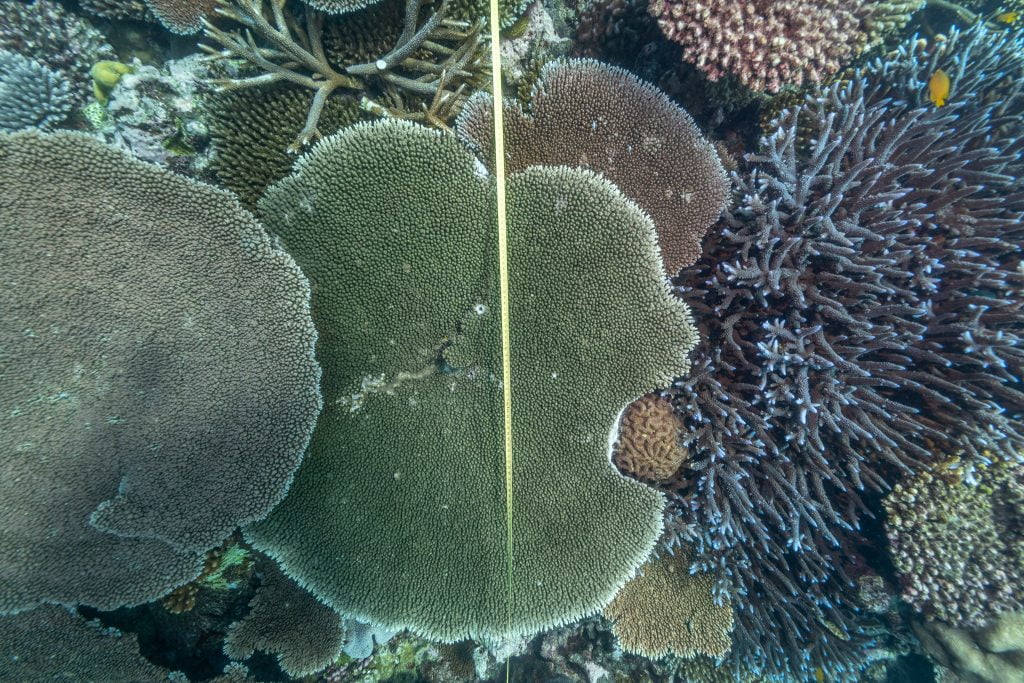
I’m so proud of the 360 underwater photographs taken along 36 transects that were laid in four different habitat types: at the reef front, in the back lagoon, at the reef crest, and we also laid three transects at the bottom of the reef crest – beginning at a depth of ten metres at what I’m calling the western flank. It was hard work, over two days, but these photographs and the corresponding videos will provide some evidence as to the state of the corals at Pixie reef for that moment in time.
Table 1.1
Date: 22 Feb 2021Habitat: Crest
Starting locations:
Rep1: (16°32.717'S, 145°51.672'E), Rep 2: (16°32.711'S, 145°51.668'E),
Rep3: (16°32.710'S, 145°51.663'E)
| Depth | Rep | @1m | @2m | @3m | @4m | @5m | @6m | @7m | @8m | @9m | @10m |
|---|---|---|---|---|---|---|---|---|---|---|---|
| 2 | 1 | ||||||||||
| 2 | 2 | ||||||||||
| 2 | 3 |
I was so grateful that we were able to lay transects along the reef front at Pixie. If you click on the thumbnails in the above table you will see some of the photographs. There will be many more uploaded at the ‘Pixie Reef Data Page 2021’ over the next couple of weeks. Leo took 120 photographs from the reef front at two different depths: 3 metres and also 6 metres.
Last November, I only visited the back lagoon. More usually, the prevailing wind is blowing onto the reef from the south east/from the front making access to this front section of the reef difficult. But on 22nd February the wind was blowing from the north northwest. (It was a hot day, and we did return to harbour under Anvil clouds, with Stuart bringing his little speed boat with us safely through a storm that afternoon. Thank you.)
This reef, Pixie Reef, was ‘surveyed’ back on 22nd March 2016 from the air by Terry Hughes of James Cook University during one of his fly pasts. It was concluded from that single observation/glance-down from 150 metres altitude that that this reef was 65% bleached. The inshore reefs north of Cairns were more or less all written-off, back then, by the experts and the mainstream media, as ruin – as dead. But they are not, not at all. (And I do worry for all the children who now believe this precious environment/the Great Barrier Reef is dead from ‘carbon dioxide pollution’.)
Pixie Reef was one of thousands of coral reefs ‘surveyed’ during March to April 2016, with the overall conclusion – reported on the front-pages of newspapers worldwide and now incorporated into schoolbooks – being that the Great Barrier Reef is more than half dead: that more than half of the corals have suddenly died from global warming.
It is my hypothesis that these coral health assessments of the Great Barrier Reef, comprising 1,156 reefs including Pixie Reef as published in the peer-reviewed technical literature by Terry Hughes and others, are yet another example of the mismatch between official government-sponsored (taxpayer funded) propaganda masquerading as science, versus reality.

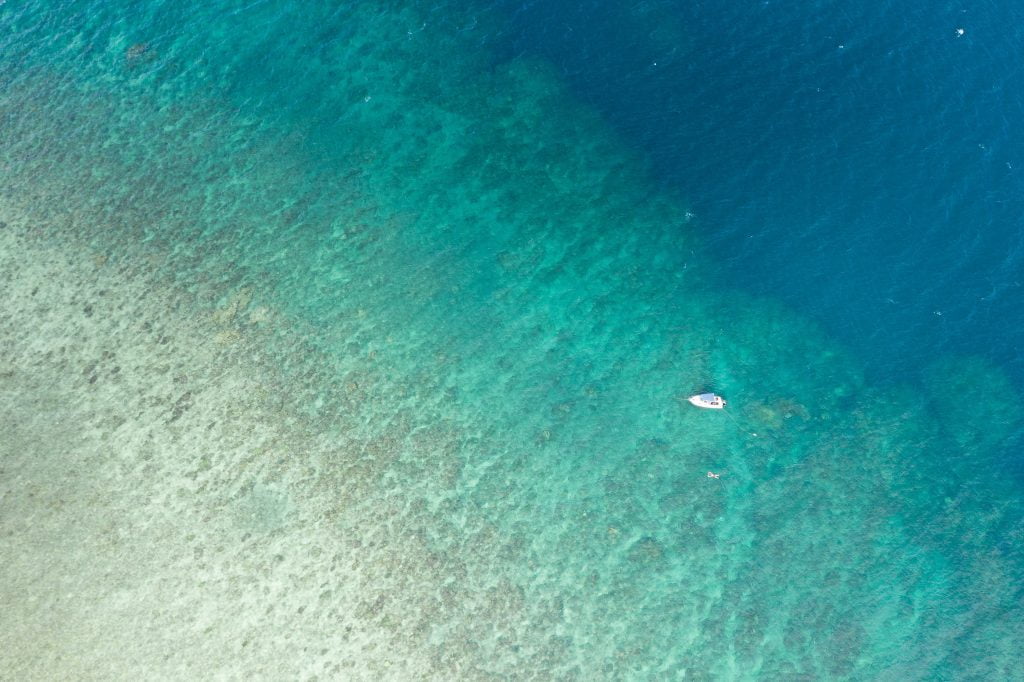
It is only under the water that we can see the true state of the corals.
Of course, Pixie Reef is where I found and named that extraordinary, large and old Porites after Craig Kelly MP. I visited ‘Porites Craig’ again on 22nd February. That bolder coral still looks relatively pale from a distance, but up close it is evident that the massive coral colony/Porites Craig has a lot of colour – with all its corallites intact and healthy.

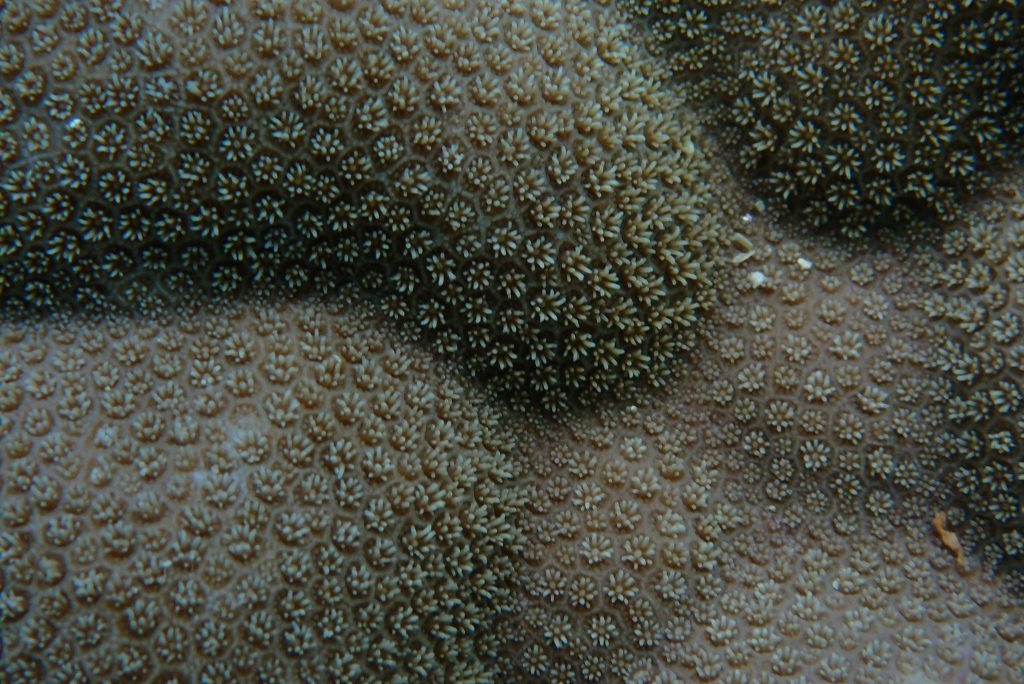
There is such a diversity of different coral types, coral species and in so many different coral colours at Pixie Reef.
And what about that green plate coral – with the bite mark? (Could it be from the pixies?)

I hypothesis that the little beige-coloured brain coral, which you can see directly under what I am describing as the bite mark, is responsible. This is perhaps a species of FavitesSymphyllia, and it could be extending its tentacles at night and eating up that section of plate coral directly above it. Very likely the Symphyllia sp.Favites sp. is eating away at the Acropora sp., so it has access to sunlight for its own zooxanthellae.
There are so many of them at Pixie Reef – all different types of corals including healthy plate corals in shades of green and also brown. You can see them in the transect photographs, click across to the new page where they will be uploaded over the next couple of weeks: https://jennifermarohasy.com/coralreefs/pixie2021/ .

Postscript
This is Part 4 of ‘Measuring Old Corals & Coral Reefs’, essentially written to let everyone know about the new data page for Pixie Reef. You can access other data pages here: https://jennifermarohasy.com/coralreefs/
There has already been a Part 1 and a Part 2:
https://jennifermarohasy.com/2020/11/measuring-old-corals-coral-reefs-part-1/
https://jennifermarohasy.com/2021/01/measuring-old-corals-coral-reefs-part-2/
The blog post about the garden of old Porites at Myrmidon should really be Part 3, ‘tis here: https://jennifermarohasy.com/2020/12/gardens-of-old-porites-without-sharks/
And so much thanks to Leonard Lim and Stuart Ireland for all the photographs and video from Pixie last week, and to The B. Macfie Family Foundation for believing in us.
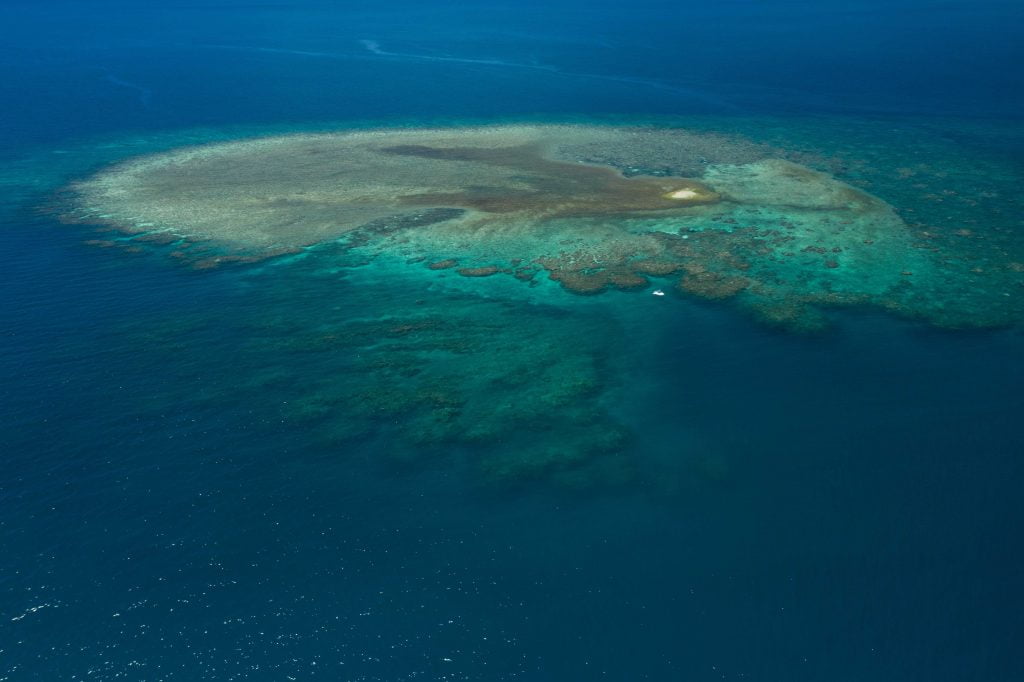

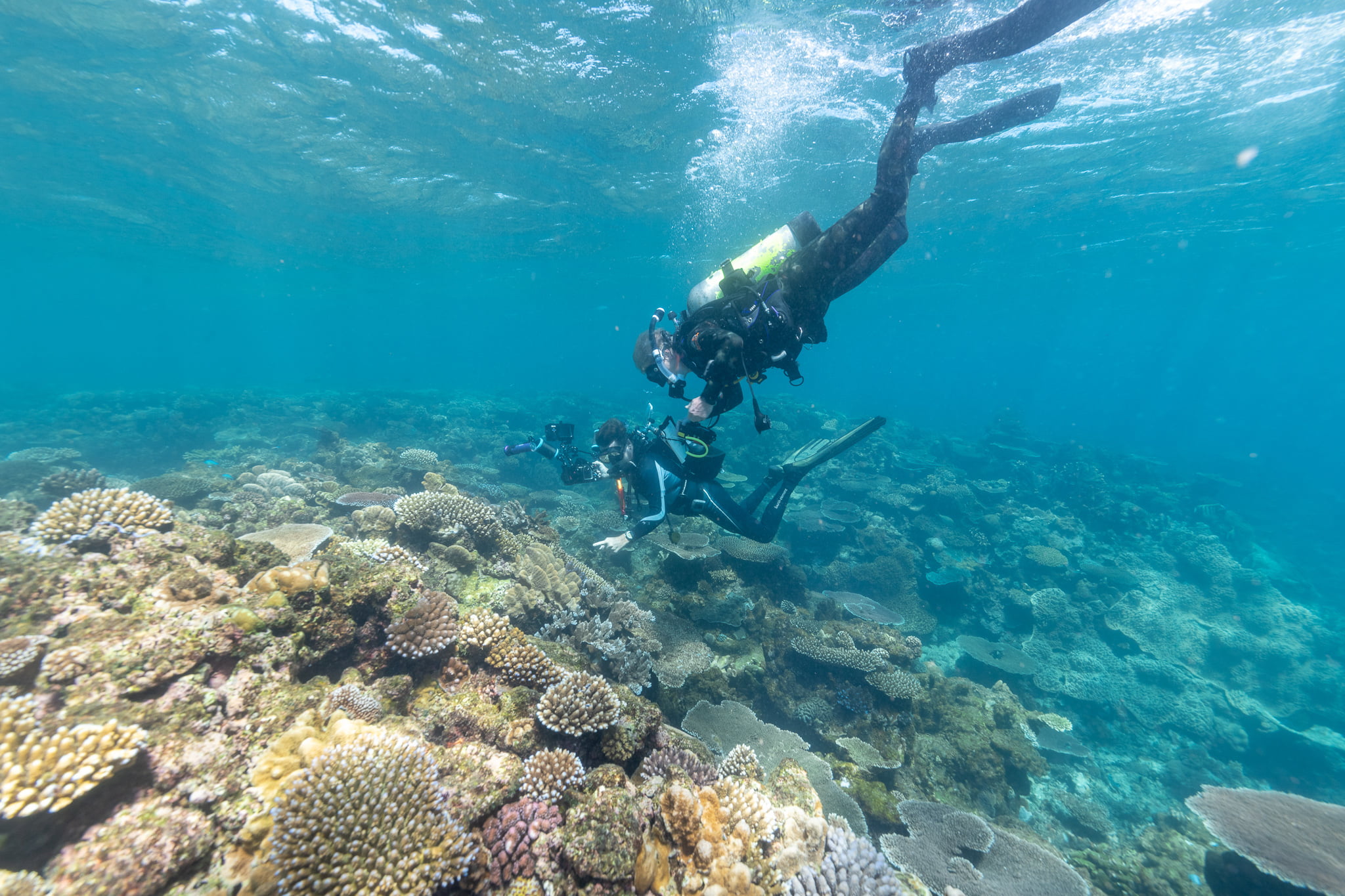
 Jennifer Marohasy BSc PhD is a critical thinker with expertise in the scientific method.
Jennifer Marohasy BSc PhD is a critical thinker with expertise in the scientific method.

Thanks for sharing Jennifer. The coral looks phenomenal.
The ‘bite’ mark could be from an amatuer coral collector taking a piece. Doesn’t look regular enough (and too big) for a parrot fish or similar. Odd though that there is a formed symphillia (?) underneath it out of the light.
Did you get any PAR readings around the corals ?
****
No I didn’t. I guess PAR is going to go down significantly with depth and this would be fairly well documented by latitude? Jen
Wow! So that is what James Cook calls bleached.
The quality of their reef research looks better every day.
I spent a lot of time around coral reefs, with tourists & privately. Most out from the Whitsundays, but quite a bit at isolated atolls & high islands north from PNG & the Solomons. The coral in your shots is more varied than I have seen in the Whitsundays, & up there.
So, I’ve received a couple of emails one suggesting that the ‘coral eater’ is a Symphyllia sp. not a Favites sp. .
Then, there is another email saying that it is a parrot fish that took the bite out of the Acropora sp.
Of course, parrot fish can be rather destructive of corals
[comment editing after seeing how many Vimeo videos were posted by accident]
Yes the first large photo I saw the Brain Coral and thought that was the culprit ! Plate coral taking up too much realestate like a units tower block going up next to little house pinching the sunlight. Wonderful snaps on Pixie reef. Thank You Jennifer
Good healthy looking corals on the Pixie Reef which once again brings into question the professional integrity of Terry Hughes and James Cook University.
So, I got up early this morning and produced the first video from the survey … beginning at the end with transects 34,35, 36. These were filmed by Stuart Ireland at 5 metres depth in the back lagoon.
Ta Jen! Exceptional work! LOVIT!
My favourites were the clam and the purple one (but I adore ALL of this shared with us).
Hi Jennifer,
Thanks for a very illuminating presentation.
Where there is darkness, you cast a brilliant light.
I would love to see you on Q@A with Terry Hughes!
Absolutely stunning work Jen! I love the great additional info on corals attacking corals!
Just WOW!!
So much thanks to Jo Nova https://joannenova.com.au/2021/03/all-reefs-look-dead-from-a-plane-great-barrier-reef-still-alive-underwater/
and Charles Rotter https://wattsupwiththat.com/2021/03/07/who-ate-the-green-plate/
and others …
for reposting.